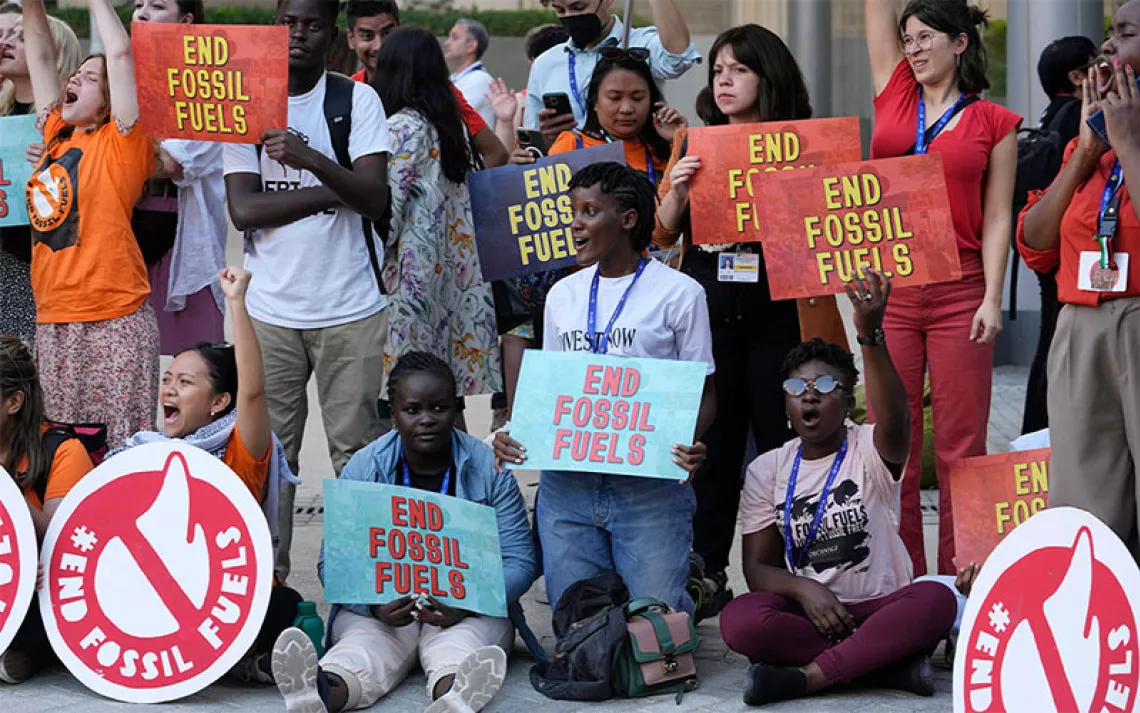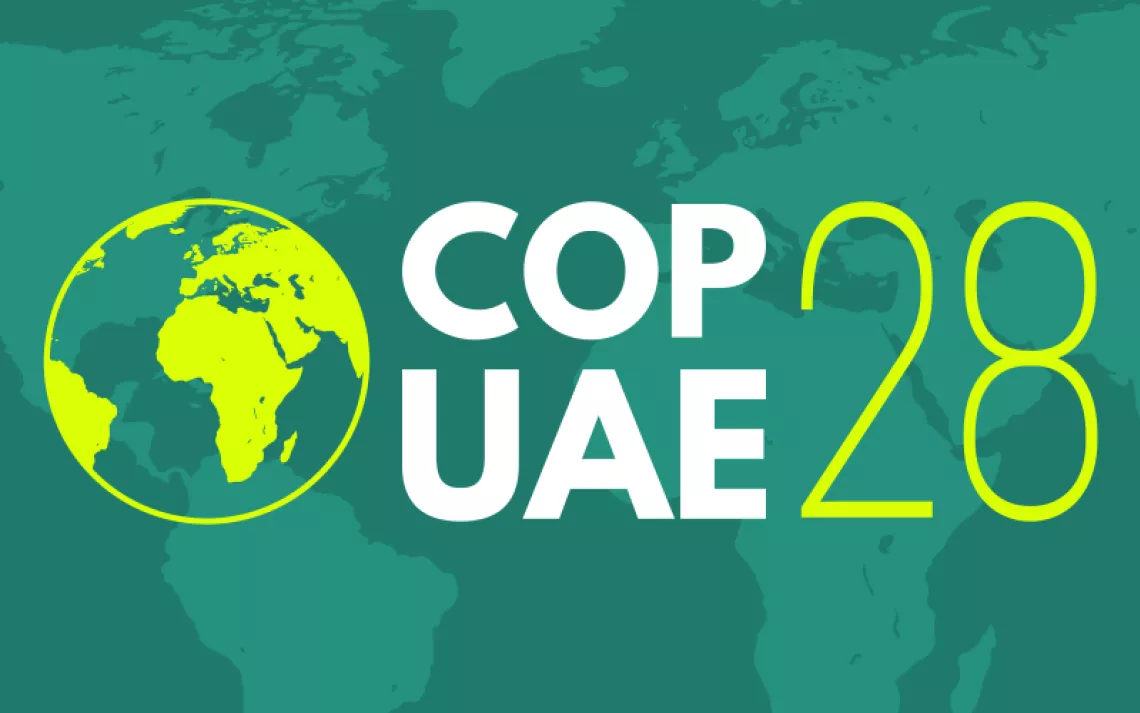Biodiversity Is About to Have Its Climate Change Moment
An international meeting of world leaders will decide the fate of life on Earth

Fall colors in San Juan National Forest. | Photo by sboice/iStock
Thirty years ago, in 1992, two events occurred that changed my life—I published my first book on the “biodiversity crisis,” and nations convened in Rio at the Earth Summit to approve the UN Framework Conventions on climate and biodiversity. Though my book is long gone, these climate and biodiversity accords are the hottest environmental news in the world right now.
These meetings are making headlines because climate impacts are mushrooming, and the biodiversity crisis is now a full-on planetary emergency. And while climate issues capture media attention with every extreme flood, drought, and wildfire, few people comprehend the global-scale unraveling of nature.
But biodiversity is about to get its moment. Next month, in Montreal, 196 nations will convene for the Conference of the Parties (COP) 15 to hammer out a new 10-year plan to reverse the accelerating loss of life on Earth.
What do you need to know about the most important environmental meeting you may never have heard of? Below is a roundup of key COP15 components that help explain why this event is crucial to our future.
How the Convention on Biological Diversity works (and doesn’t work)
This convention entered into international law in 1993 with three main goals: conserve biodiversity, promote sustainable use of biodiversity, and create fair and equitable sharing of benefits derived from Earth’s genetic resources. Work is administrated through a secretariat in Montreal with each signatory state constructing its own detailed biodiversity action plan in line with agreed-upon targets. Aspirational goals have been the norm with this convention, and actions by member states to protect nature and spur green development are voluntary.
There is a problem with all this: Virtually all the biodiversity goals set up under the convention have never been achieved. Meanwhile, 70 percent of lands and 60 percent of oceans on Earth have been significantly altered by people. And entire groups of organisms are under pressure. Birds have declined by 29 percent since 1970, and mammals, reptiles, insects, and bats are not far behind. The driver of these changes is well known—more people are exploiting more of the planet, and lifeforms from microbes to Amazonian forests are on the ropes.
The good news is that since 2019 and the release of several scientific reports that reviewed global efforts to sustain life, it has become clear that things must change.
And not just change through incremental steps that inch us ever closer toward distant goals. The new catchphrase on the lips of almost every expert and delegate engaged with COP15 is "transformative change," meaning wholesale economic and social reorganization so that loss of species, ecosystems, and diminishment of natures’ contributions to people—clean water and air, crop pollinators, functional nutrient cycles, flood regulation and more—is reversed by 2030 and restored by 2050.
Getting to know the Global Biodiversity Framework
The COP15 game plan is embodied in the draft Global Biodiversity Framework (GBF) that will be voted on by all countries in Montreal and come into immediate force through 2030.
You may have heard about the GBF through media coverage of its most well-known target, which goes by the name of 30X30. This refers to increasing the area of protected lands and waters in most countries to 30 percent by 2030. But with these numbers currently at 17 percent for land and 10 percent for water, this proposed expansion represents a heavy lift. Is 30X30 even possible? Yes; the science says this is a critical goal if we want to protect life, and global leaders are lining up in support. Coming into COP15, over a hundred nations have already signed on to 30X30.
But the GBF doesn’t stop at 30x30. The draft contains 21 additional targets, and this is where the challenges come into focus. There are targets that address traditional conservation concerns around endangered plants and animals, environmental pollution, disruptive invasive organisms, and ecological restoration of damaged lands.
And there are targets that expand traditional visions of how to protect nature. These include mandating that private businesses track their impacts on biodiversity, creating more green spaces in cities, including Indigenous peoples in decision-making, and committing to gender participation and equal access across all convention projects.
All these objectives are important. But there are four targets that will make or break the ultimate success of COP15.
First on this list of critical GBF targets: how we grow, transport, and consume our food. Agriculture transforms wild forests and fields into simplified, single-purpose lands that result in a scorched-earth effect on wild nature. Cumulatively, these impacts already account for 60 percent of current biodiversity loss on land, while commercial fishing results in the overexploitation of marine fisheries. And this tremendous pressure is not going away; we will need to produce two times more food by 2050 given projected human population increases and consumption patterns.
Then there is the fact that about a third of all food grown today is wasted from farm to table. Right now, no country in the world has any effective policy for how to grow and transport food, catch fish sustainably, and reduce food waste.
Draft GBF Target 10 wants to change this. Doing so demands a mix of actions: removing billions of dollars in subsidies that undergird agriculture and fishing but destroy nature, reconfiguring global food supply chains, and encouraging people everywhere to shift their diets away from meat. Getting countries as diverse as India, France, and Tanzania to act on these issues may be difficult to envision. But not transforming agriculture, food supply chains, and eating habits is simply no longer on the table—if we want food systems that function into the future.
Another key target is item 14. This section recognizes that biodiversity doesn’t have a chance until we mainstream protection principles into everyday activities. This goes well beyond improving environmental impact statements; this transformative target aims to bring biodiversity into all levels of public and private decision-making from building infrastructure to investment planning. This would create a world where finance and environment ministers both have the same basic concerns, and bankers would add biodiversity benefits to the bottom line. After all, over half of all global economic activity depends on healthy species and functioning ecosystems.
Changes are already underway. China is experimenting with performance incentives for municipal officials if they incorporate biodiversity benefits into local planning. And 41 countries have signed on to BIOFIN, a UN program that works with national ministries to construct sustainable financial plans and then link them to existing national biodiversity action plans. Private businesses are also waking up. In the buildup to COP15, it is exciting to see multiple coalitions of corporations getting on board with biodiversity accounting.
Target 8 speaks to most of the people I know who have explored the UN conventions on biodiversity and climate and immediately ask, “Why have we wasted time attempting to solve these two paramount challenges?”
Well, first, it’s easier to understand climate. When heat waves, droughts, and wildfires impact your life, you receive direct messages that something is wrong. Biodiversity dysfunction, on the other hand, is almost never in your face. Who can tell when the West Coast nitrogen cycle is not working well, groundwater is disappearing, or bat and bee populations are in decline?
Second, the UN climate convention contains one goal—to keep average warming below 2°C. But there is no single goal for biodiversity protection; supporting life on Earth is complex and will require the fulfillment of 22 targets according to the draft GBF. This is probably 21 targets more than most of us can comprehend.
However, if you look carefully at biodiversity and climate goals, you can see that they are deeply linked together. To attain our climate goal, we will have to reach net-zero emissions into the atmosphere. On the ground, this means we will have to protect all global ecosystems that store “irrecoverable” carbon stocks that we cannot afford to release into the air.
The fourth critical goal, Target 19, is clear: We are going to have to pay the price for keeping Earth intact.
Consider the numbers. None of the world’s 17 most biodiverse nations come close to adequately funding their existing protected areas. Brazil, the most diverse country in the world, funds less than 20 percent of its biodiversity management costs. In the US, the National Park Service budget has gone up by 5 percent in the past decade, but inflation over the same period hit 32 percent.
Overall, the gap between what countries collectively spend on biodiversity and what we need to spend is about US $711 billion a year. That amount of money may appear daunting, and maybe it is. But people spend more every year on cigarettes and a similar amount on soft drinks.
The draft GBT proposes to close this huge gap by breaking down funding into two packages. The first package would come from repurposing the US$500 billion in negative subsidies that we collectively spend every year on nature-destroying actions that prop up conventional agriculture, extractive forestry, and overfishing. (Agricultural subsidies that harm biodiversity make up around 80 percent of this amount, providing clear evidence why food systems reform is so necessary for the future of life on Earth.)
This leaves about US$200 billion to fill out package two. No problem, given that just one new law in one country, the 2021 Infrastructure Improvement and Jobs Act in the US, contains US$350 billion for highway improvements. So, if all COP15 countries increased their domestic spending on nature, wealthy nations stepped up support for conservation in low- and middle-income nations, and private businesses stopped talking about corporate responsibility and started contributing toward their biodiversity bottom line, we could easily fund a healthy biodiverse future.
What happens in Montreal must not stay in Montreal
As the COP27 climate convention concluded in Egypt last week, presidents and prime ministers made speeches that, for the first time, explicitly recognized links between climate and biodiversity action. The word in the halls of the meeting was that climate and biodiversity efforts “cannot fail.”
The specific GBF targets that are agreed upon at COP15 cannot be left stranded inside the convention venue. Actions will need to quickly shift from the dry atmosphere of international negotiations into national corridors of power in capitols and parliaments where specific policies are fleshed out and into government bureaucracies in every country where the implementation rubber hits the road. Work must quicken in corporate boardrooms where vast sums await allocation, in environmental groups that can help monitor success and failure, and into our homes where we live.
Maybe the most transformative piece of the biodiversity puzzle is that it shows us that nature and people are one, and that our traditional conservation vision of protecting a small portion of Earth as parks and wilderness was never going to be enough to allow us to take the rest of nature for granted. Even expanding to 30X30 begs the question "what about the other 70 percent of nature?"
This question pushes us to step up and act personally on behalf of biodiversity. We can learn about the local ecosystems where we live and get involved with their protection. We can pay more attention to how food gets onto our table and into our bellies and make better choices given agriculture's outsize impacts on biodiversity (and climate). We can demand that politicians connect the dots between conservation, climate, and human health and well-being and then vote for them. We can do all of these things, or we can select actions where we can do our best.
We don’t need a successful COP15 to take action. But a strong GBF will bolster local and global efforts in these uncertain times. No scientist can say how much time we have left to do right by nature, but as we track upcoming events in Montreal, and put our own household biodiversity plans into action, we are about to find out.
 The Magazine of The Sierra Club
The Magazine of The Sierra Club



